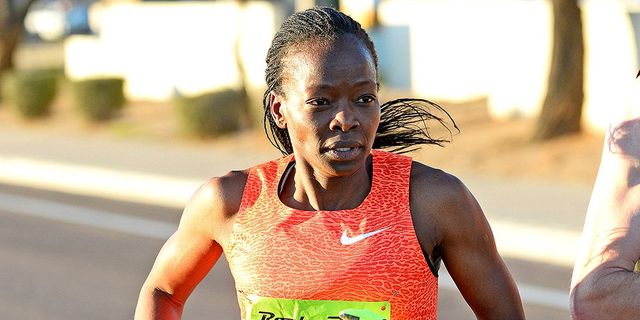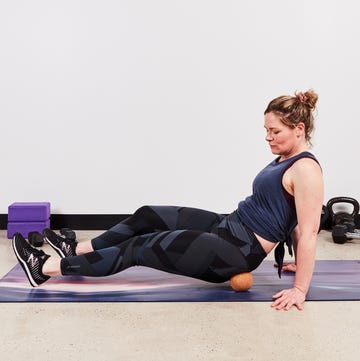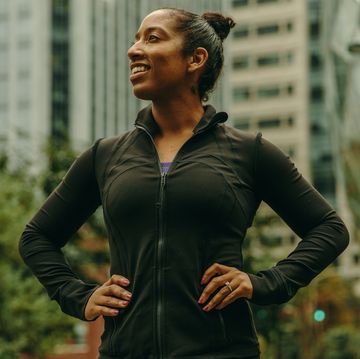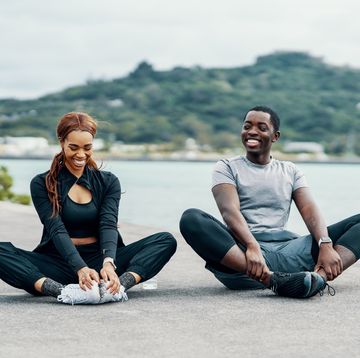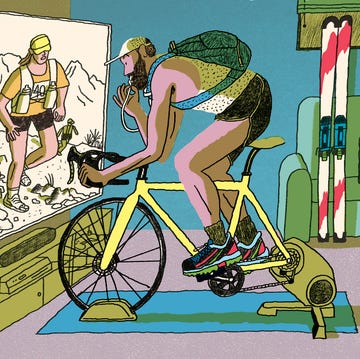Janet Bawcom is used to taking the unconventional path. She’s a 2012 track Olympian best known as a road racer. She grew up in Kenya but didn’t become an elite runner until after college. And while her peers like to peak for a few key races per year, she races often, sometimes even twice in a weekend.
After graduating from a Kenyan boarding school, Bawcom (then Cherobon) was waiting for a bus when Peter Rono, the 1988 Olympic 1500-meter champion, offered her a ride—a friendly gesture not uncommon in Kenya. He told her running could be her ticket to a U.S. college education, even though she’d never been a runner. So Bawcom joined Rono’s training group; two years later, she got into Harding University in Searcy, Arkansas. She barely broke 20:00 in her first 5K cross-country race there, but eventually her natural talent emerged. She graduated in 2005 with three NCAA Division II titles.
After settling in Atlanta with her American husband, Bawcom began doing local races most weekends to help pay for nursing school. In 2011, the two relocated to Flagstaff, Arizona, where Bawcom started working with coach Jack Daniels and entering more competitive events. Bawcom won or placed in enough races to become the 2011 and 2012 winner of the USA Running circuit, a series that rewards frequent, high-level competition. (Her prize-money winnings for those years totaled $75,650 and $114,973, respectively—figures that put Bawcom among the top-earning American elites.) Around a busy road schedule, she made the 2012 U.S. Olympic team for 10,000 meters and placed 12th in the games. Bawcom placed fifth in the 2012 and 2016 U.S. Olympic Marathon Trials.
A little more than a month after February’s trials, she was top American and 11th overall at the World Half Marathon Championships, finishing in 1:10:46. She has a few races planned during her buildup for the New York City Marathon next month.
Although Bawcom thinks she might have faster PRs with a sparser racing schedule, she’s content with her approach. “I don’t think there’s a right or wrong way of doing it,” she says. “What satisfies you in life, you should go for it. My uncle, [former Kenyan marathon record holder] Sammy Lelei, told me, ‘If there’s one thing I regret, it’s not racing more.’ I’ve covered a lot of ground and feel good about it.”
Key Workout
What: Two-mile repeats at the pace she can hold for an hour (in Flagstaff, which is 7,000 feet above sea level, that’s 5:20 to 5:30 per mile)
Why: This workout builds the physical and mental ability to sustain a wearing pace, and imparts the strength to endure a long racing season.
When: Every three weeks before a racing season
How: Bawcom usually does three or four two-mile repeats, bookended by a three-to four-mile warmup and cooldown. She does a two-minute recovery jog between repeats.
Tips From the Top
Take care. In the 24 hours after a race, do things to speed your recovery. “I do more stretching, massage, and ice baths so that I’m fresh for the next race,” Bawcom says.
Take it easy. Don’t get discouraged by a bad performance. “I tell myself I have one really bad race a year and think, Good, I just got that one out of the way,” she says.
Take a break. At the end of a long racing season, Bawcom doesn’t run for two to four weeks. “Your body needs time to let everything rest up,” she says.

Scott is a veteran running, fitness, and health journalist who has held senior editorial positions at Runner’s World and Running Times. Much of his writing translates sport science research and elite best practices into practical guidance for everyday athletes. He is the author or coauthor of several running books, including Running Is My Therapy, Advanced Marathoning, and Meb for Mortals. Scott has also written about running for Slate, The Atlantic, the Washington Post, and other members of the sedentary media. His lifetime running odometer is past 110,000 miles, but he’s as much in love as ever.
